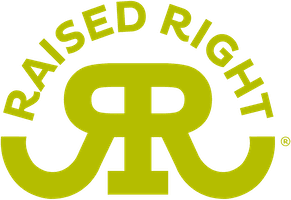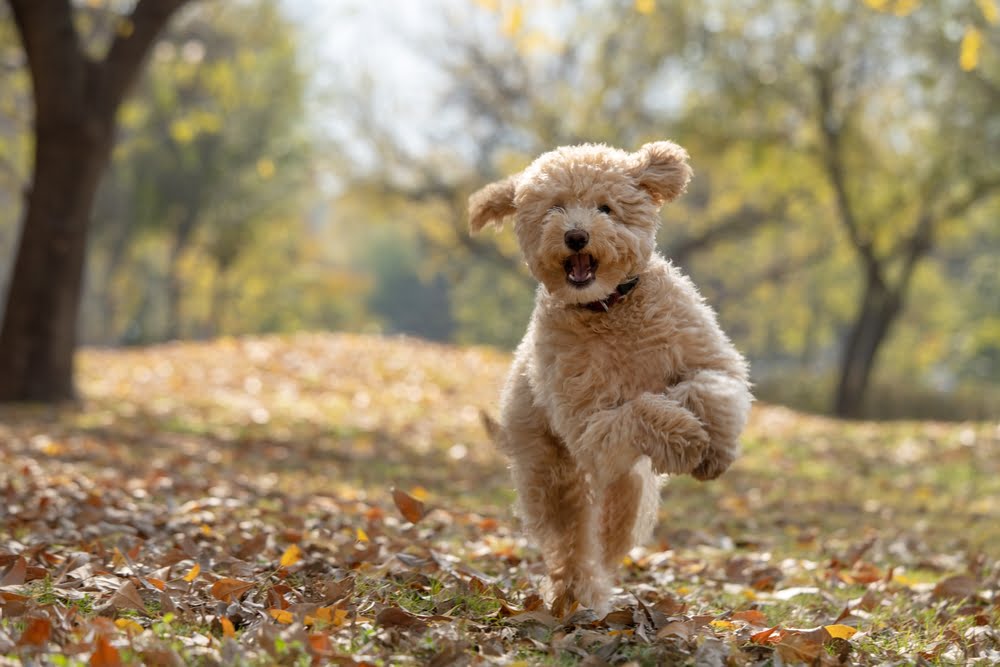
Skin problems are one of the most common reasons why owners bring their dogs to the vet. Dogs can get a huge variety of skin conditions ranging from mild to severe cases and they can be caused by many different factors. What if your dog has dry flaky skin and is losing hair, what is the cause and what can you do about it? We’ll go through all the potential causes and recommend some treatments that might help your dog.
What Should Dog’s Skin Look Like?
First of all, we need to know what normal skin and hair look like. Healthy dogs should have shiny coats that don’t look overly greasy (seborrhea) or dry. There should be minimal dry flakes (dandruff) and the coat should be even without any patches of hair missing. There should be no parasite eggs or fleas seen on the coat.
The skin shouldn’t have any reddened or inflamed areas. There should be no lumps, bumps, or oozing areas of skin that look infected. The dog shouldn’t be trying to scratch or rub their skin off the floor as this is a sign of irritation.
What Signs Should You Look Out For?
There are many signs that your dog’s skin might not be in optimal condition. If your dog has some of these symptoms below, it’s vital to investigate what could be causing their skin problem.
Symptoms of skin problems in dogs include:
- Dry flaky skin
- Hair loss
- Itching and scratching
- Reddened areas of skin
- Raised lumps or bumps on the skin
- Oozing/infected areas
- Scabs
- Change of coat or skin color
- Thin skin
If your dog has some of the symptoms above along with other symptoms like weight loss, increased drinking or urination, vomiting, diarrhea, etc. it’s important to get them checked by your veterinarian.
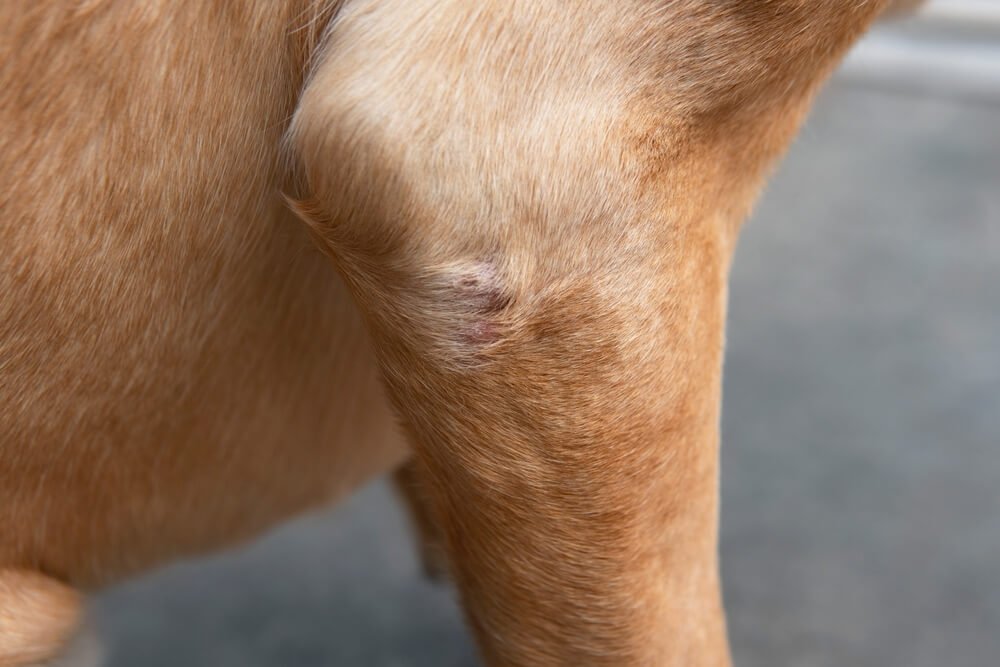
There should be minimal dry flakes (dandruff) and the coat should be even without any patches of hair missing.
What Causes Flaky Skin and Hair loss?
As we’ve discussed, skin conditions are very common amongst dogs. They can be caused by multiple issues, directly related to the skin or separate from the skin e.g. hormonal problems. First of all, rule out a recent change that may have prompted the skin condition e.g. new diet, new shampoo, etc. We’ll go through all of the potential causes below:
Poor Nutrition
If your dog has flaky dry skin and hair loss, one of the first things you should look at is your dog’s nutrition. Is your dog on a high quality balanced dog food? If not and it’s on a poor quality dog food, this could be the cause of the skin problem. Poor quality foods can cause multiple nutritional deficiencies that can affect the skin and coat.
How to spot a poor-quality dog food? These dog foods tend to have very long ingredient lists, with many chemical preservatives and additives added in. They can have low levels of protein and high amounts of ‘filler’ foods such as wheat, corn, and soy.
High quality foods tend to have a higher protein content, lower percentage of carbohydrates, with a limited ingredient list in their recipes. They don’t have preservatives or additives and should meet AAFCO’s standards for a complete & balanced diet.
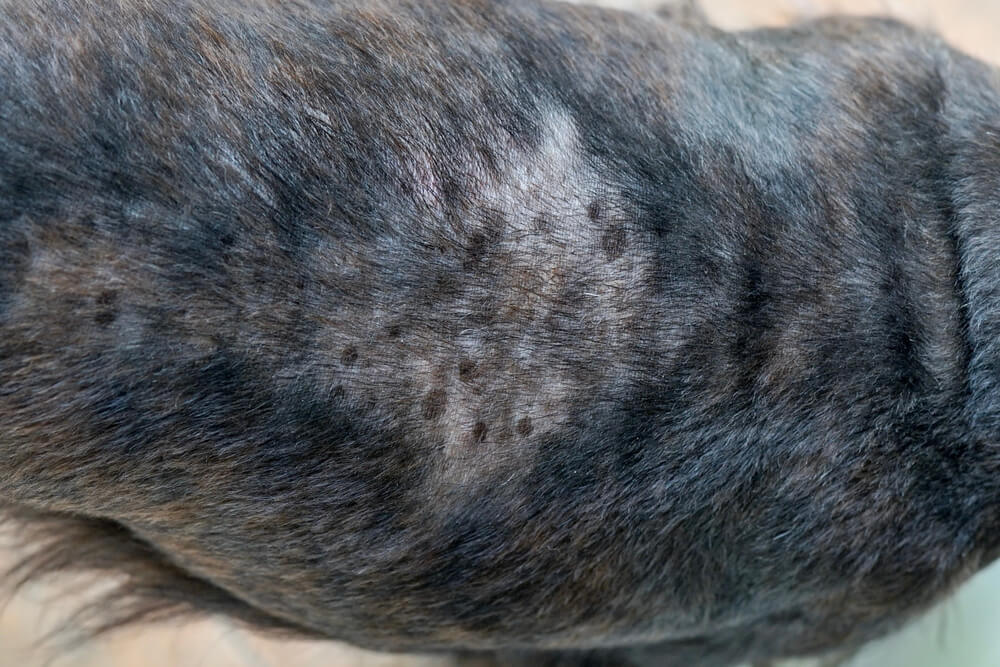
Parasites can cause redness and scabs where they bite the skin, but also cause dogs to scratch themselves causing further damage.
Parasites
Parasites are a common cause of irritation to dogs. They can cause redness and scabs where they bite the skin but also cause dogs to scratch themselves causing further damage. Some dogs can even be allergic to the parasite bite and saliva e.g. flea allergic dermatitis.
There are many different types of parasites but the most common are fleas, ticks, mites, and lice. Mites cause the common condition known as mange, which causes severe hair loss and skin disease.
Allergies
Allergies (commonly referred to as atopic dermatitis or atopy) are extremely common in dogs. Allergens can be anything from food allergens to environmental allergens. Environmental allergens can include dust mites, pollen, plants or household diffusers, cleaners, washing detergent, etc.
They can cause varied symptoms of skin problems including;
- Dry, flaky skin
- Reddened sore areas
- Scabs or hives
- Extreme itching or rubbing their face/belly off the floor
Bacterial or Fungal Infections
Bacterial infections can cause severe skin irritation and discomfort to dogs. They’re often called pyoderma and can include papules or pustules (little lumps filled with pus) on the skin. Fungal infections are also common, the most notorious being ringworm. It can cause dry hairless patches of skin which can sometimes appear in circular lesions. It’s common in puppies or dogs with a compromised immune system. Ringworm is zoonotic (meaning it can spread to humans) so quick treatment is recommended.
Environmental Factors
Environmental factors such as colder weather conditions combined with increased use of central heating can cause a dog’s coat to dry out.
Other factors could be anything in the environment that might irritate your dog’s coat. Be mindful of any strong cleaners, washing detergents, or sprays that you use in your home.
Underlying Health Conditions
Certain diseases can cause skin changes in dogs. Particularly hormonal or endocrine diseases such as Cushing’s disease (when the body makes excess steroid hormone) or hypothyroidism (a low level of thyroid hormone) can cause dull dry coats with hair loss and change in pigmentation along with other symptoms.
Ichthyosis is an uncommon skin condition that certain breeds such as the West Highland White Terrier or Golden Retriever might be born with. It causes very dry, flaky, peeling skin.
Rarely, cancerous conditions can present in the skin e.g. epitheliotrophic lymphoma or melanoma. These will often present differently from the signs above and may have other symptoms. It’s important to get any new skin lesions or conditions checked by your veterinarian.
Home Remedies for Dry Flaky Skin and Hair Loss
If your dog has dry flaky skin and is losing hair, it’s important to find out why. If they seem otherwise healthy and aren’t irritated by their skin you can try a few things at home to help the problem.
A logical first step is to address the nutrition your dog is getting by switching to a limited ingredient diet that’s high in protein and low in carbohydrates as it’s likely that your dog is having a reaction to an ingredient in their current diet. You can also supplement with essential fatty acids (such as flaxseed oil and cod liver oil) which are commonly included in skin supplements for dogs. It’s always smart to check in with your veterinarian or a nutritionist before introducing any supplements to your dog.
Make sure that your dog is up to date with parasite treatment. Only buy this from a reputable source and weigh your dog to ensure that you are dosing properly.
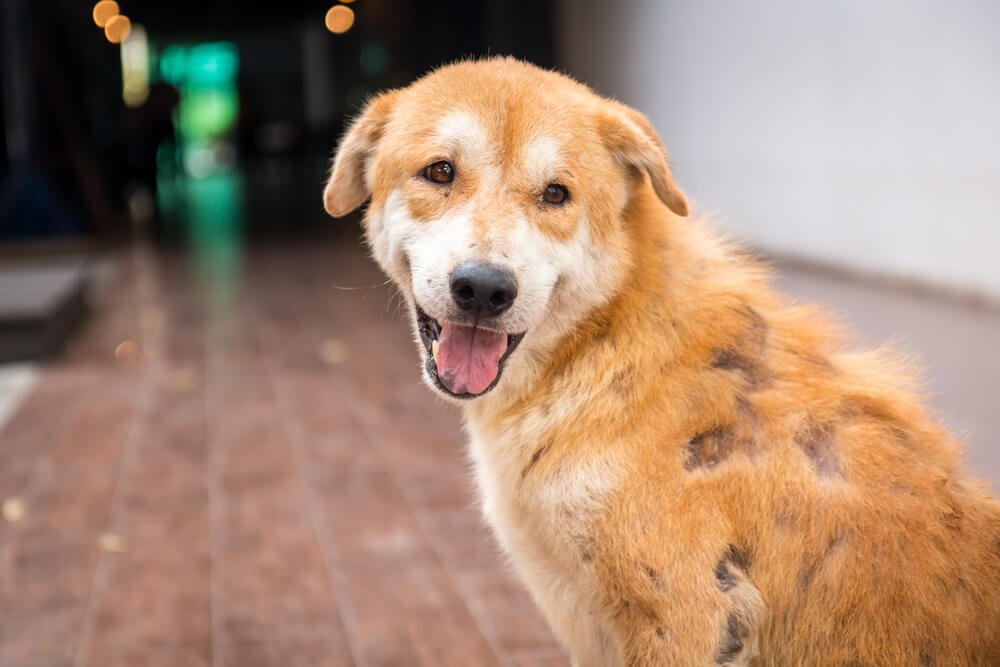
If your dog has dry flaky skin and is losing hair, it’s important to find out why.
Treatment for Skin Problems
Certain skin conditions need veterinary treatment such as antibiotics, steroids, medicated shampoos, immunotherapy treatment, etc. There’s a wide variety of tests and treatments available for the many varied skin conditions that dogs can get. If your dog has other symptoms or if the skin problem isn’t resolving, get them checked out by your veterinarian to rule out other skin conditions.
Conclusion
Dry flaky skin with some hair loss is common in dogs and poor nutrition is a common cause. Make sure that your dog is on a high quality, limited ingredient diet that doesn’t contain any preservatives or high carb filler ingredients like potato, rice, oats, pasta, and barley. Essential fatty acids and parasite treatment can also help. Get advice from your veterinarian if there are other symptoms or the problem isn’t improving.
Frequently Asked Questions:
Why is my dog losing a lot of fur and having dandruff?
It could be due to a poor quality diet. Try switching to a high quality, limited ingredient dog food that is high in protein and low in carbohydrates.
What can I put on my dog’s dry flaky skin?
Medicated shampoos and dog moisturizers can help along with supplementing essential fatty acids and having your dog on a high quality diet. Don’t apply topical human treatment to your dog.
Does my dog have dandruff or mites?
Most mites burrow under the skin except for Cheyletiella mites. These are similar to dandruff and have the nickname ‘walking dandruff’. Your vet will be able to tell the difference by examining samples under a microscope.
